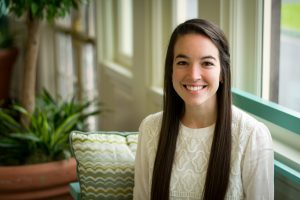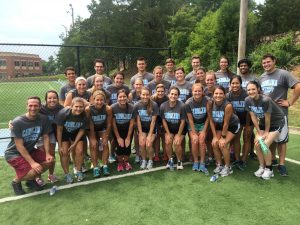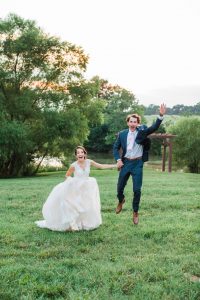Apr 20 2017
Visser, Brennan
Professional Goal
My professional goal is to become a pediatric physical therapist in North Carolina that is compassionate, creative and knowledgeable. I strive to be a doctor of physical therapy that is constantly seeking best practices through use of up-to-date evidence. Whether working in an outpatient, school-based, or hospital setting, I plan on pursuing a mentorship relationship with an experienced pediatric physical therapist, from whom I can learn invaluable things my first year of professional practice.
Career Plan
- May 2014: Graduate B.A. Exercise and Sport Science: Athletic Training, University of North Carolina at Chapel Hill
- 2013: Ronald W. Hyatt Scholar
- 2014: Inducted into Phi Beta Kappa Society
- June 2014: Passed National Board of Certification exam to become a Certified Athletic Trainer (ATC)
- August 2014: begin UNC Doctorate of Physical Therapy Program
- Clinical rotation I (8 weeks): Brunswick Physical Therapy Associates – Outpatient Orthopedics, Underserved; 2015
- Clinical rotation II (8 weeks): New Hanover County School System – Pediatric Neurology; 2016
- Clinical rotation III (8 weeks): Duke Regional Hospital – Acute Care; 2016
- Clinical rotation IV (12 weeks): Brenner Children’s at Wake Forest Baptist Medical Center – Pediatric Acute Care; 2017
- July 2017: Pass NPTE and become a licensed physical therapist in North Carolina
- August 2017: Graduate from UNC Doctorate of Physical Therapy Program
- August 2017: Obtain employment as a physical therapist in NC where I am able to pursue a mentorship relationship from an experienced PT
- 2025: Become a clinical instructor
- 2027: Obtain PCS (Pediatric Certified Specialist) by qualifying exam
Self-Assessment
- Strengths
- Ability to communicate effectively and compassionately with all patients and their families.
- Experience in pediatric, orthopedic and acute care setting through 36 weeks of clinical rotations.
- Knowledge of different types of adaptive equipment for the pediatric patient population.
- Passionate about helping children with disabilities problem-solve challenges.
- Areas for Further Development
- Direction and supervision of PTAs.
- Understanding of Medicaid requirements and restrictions.
- Building relationships with equipment vendors in the city of my future job, so I can ensure my pediatric patients are receiving the best care possible when it comes to their equipment needs.
Objectives
Special areas of interest: pediatrics and the inpatient setting.
- Look to share the knowledge and experiences I have gained in pediatrics with other students in the program interested in pediatrics.
- Graduate from the University of North Carolina at Chapel Hill DPT program and pass the NPTE Licensure Exam.
- Begin working as a physical therapist in August 2017, either any pediatric setting or an acute care setting working towards adding pediatric patients to my caseload.
- Enhance my clinical skills in pediatrics through continuing education courses and mentorship from experienced clinicians.
Developmental Strategies
- Use my capstone project to create an educational resource on pediatric adaptive equipment for DPT students interested in pursuing pediatrics.
- Complete elective coursework to develop my skills for pediatric practice through learning about child and family assessment and intervention, as well as advanced neuromuscular intervention.
- Complete a 12-week inpatient pediatric rotation at Brenner Children’s Hospital to enhance my evaluation and intervention skills with this patient population.
- Attend continuing education courses, particularly the NCPTA Fall Conference, CSM, and the Academy of Pediatric Physical Therapy Annual Conference (APPTAC) in 2017-2018.
Electives
Fall 2016
- PHYT880: Child/Family Assessment and Intervention
Spring 2017
- PHYT885: Advanced Neuromuscular Intervention
Academic Product Examples
Capstone: Assessing the Need For and Effectiveness of a Presentation on Pediatric Equipment in Doctor of Physical Therapy Students
- I had the opportunity to develop an educational supplement to the course PHYT701: Motor Development taken by first year students, that was also made available to second and third year students interested in pursuing pediatrics. The learning objectives for the presentation included introducing DPT students to the different categories of pediatric adaptive equipment and their indications for use, and how to choose certain aspects of equipment based upon patient presentation. The categories of pediatric equipment included in the presentation were standers (dynamic, prone, supine, sit-to-stand), walkers, pacers/gait trainers, adaptive seating (strollers, school chairs, floor sitters), and ADL-related equipment. In addition to creating a Voicethread presentation, I had the students take assessments and fill out surveys to find the implications of this presentation for DPT education. All of this can be found here.
Critically-Appraised Topic (CAT)
- My CAT, which can be found here, seeks available evidence regarding a very commonly used piece of pediatric equipment. It set out to answer the following clinical question: In a child with cerebral palsy, is an anterior walker more effective than a posterior walker in improving upright posture (measured by decreased hip and trunk flexion), gait parameters (such as cadence, walking velocity, stride and step length, single and double support/stance time) and energy efficiency (measured by oxygen consumption)?
Lumbosacral Myelomeningocele: Summary and Assessment Toolbox
- This paper takes a closer look at lumbosacral myelomeningocele (MMC), discussing the epidemiology, pathology, related APTA guide patterns, all facets of the ICF model, as well as medical and PT interventions.
- The assessment toolbox explains appropriate pediatric outcome measures that can be utilized by a physical therapist on this patient population.
Neuro Special Topics Website: TheraTogs and SPIO for individuals with Neurological Conditions
- As a part of the Advanced Neuromuscular Intervention elective, I updated a web page discussing the evidence for TheraTogs, while also adding another compressive garment SPIO to the page. The page includes an explanation of the garments and indications for use, including appropriate patient populations. It also discusses the available evidence and clinical implications.
Reflective Statement
After 7 straight years at the University of North Carolina, my time at this amazing university is about to come to an end. However, I will take with me all of the amazing experiences, endless knowledge, and countless lessons learned from all the influential people I met while I was there. I went into physical therapy school with an athletic training certification hoping to pursue sports medicine, but ended up discovering my love for pediatrics and the immense impact I could have on these children’s lives. I cannot wait to be an advocate for so many who often cannot advocate for themselves. Although graduation is almost upon us, my time as a student is not over. If I have learned anything in this program it is that as a member of the physical therapy profession, there is always more to learn. I am excited to see what the future holds as I enter the field of physical therapy with my 29 accomplished classmates. I could not have made it through these 3 vigorous years without them. I would like to thank my clinical instructors, professors, friends and family, and especially my husband, who have been so crucial to my success in this program. And of course I can’t forget – go heels!



